See how you can create learning centers for free using children’s books, magazines, reproducible books, worksheets, or even your whole-class lesson materials!
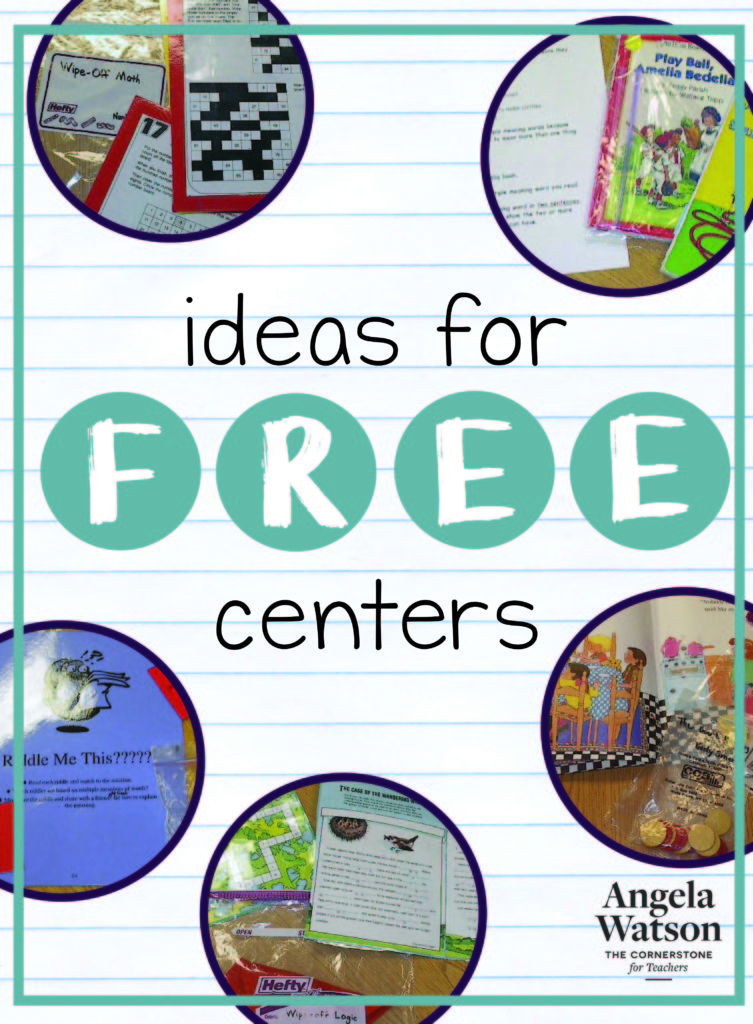
Use classroom books to make free centers in seconds!
Your school or class library contain enough books to fill your center area all year long. In many cases, you need only to write brief directions for students and slip them in a bag with the book or materials.
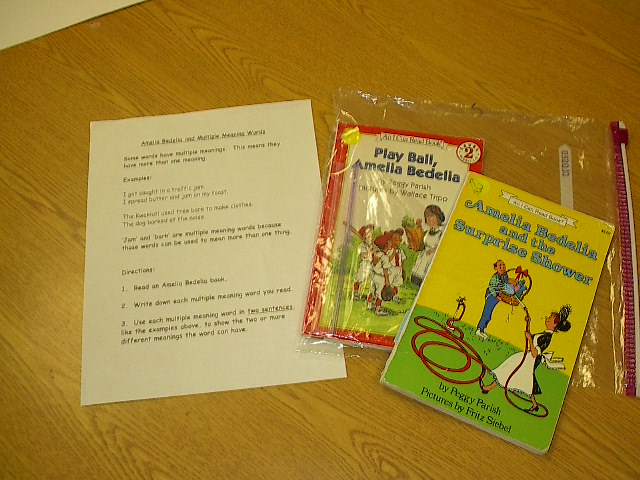
Find books of a specific genre and slip them in a bag with easy directions for tasks you’re already working on in class to have almost instant skill reinforcement through centers. I use the Amelia Bedelia books for multiple meaning words practice: the direction say to read any Amelia Bedelia book and write down each multiple meaning word you see, then create two sentences for each one to show the different meanings the word can have.
I also use biographies: kids make Venn Diagrams to compare their lives to the person in the book, or write a letter to the person (I change the books and tasks depending on current objectives).
Drawing books, poetry books, and children’s magazines also make for engaging and educational centers when a specific skill is highlighted.
Use magazines and reproducible teacher resource books to make EASY centers!
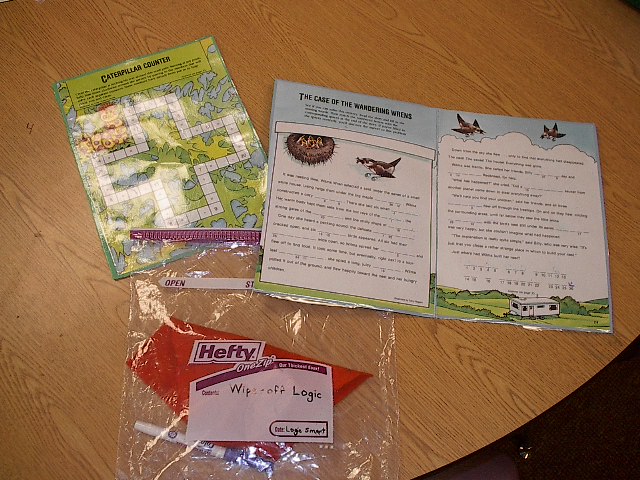
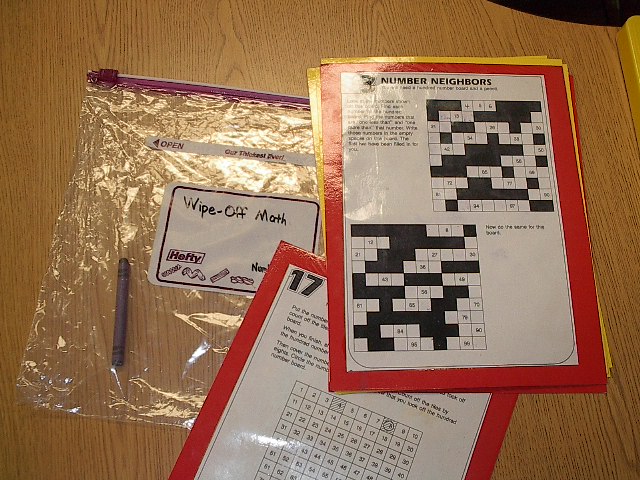
At the beginning of each school year, I receive a free sample copy of Highlights magazine and two other kids’ magazines published by Highlights, PuzzleMania and MathMania. I rip out some of the pages, glue them to construction paper for durability, and laminate. Students then use crayons or wipe-off markers to write on them and erase with felt squares.
You can turn your lessons into centers!
Why make manipulatives, chart strips, posters, and class games to only use them for one lesson a year? Reinforce lessons by placing the materials in centers after you teach!
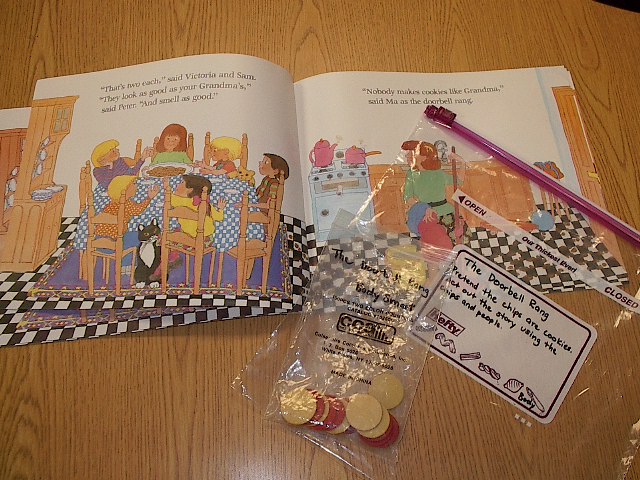
This is a book called “The Doorbell Rang” that I use to introduce the concept of division in a meaningful way. Though division is obviously a math concept, the incorporation of literature makes this a great center for literacy practice, too. In the story, 2 children are sitting down to eat 12 cookies, and figure out that they will get 6 cookies each. The doorbell rings and another child comes in, so they calculate that they will each get 4 cookies. This continues until they get to 12 divided 12, when Grandma arrives with a fresh batch of cookies! I read the story first, then have the kids act it out using the tokens as cookies (real cookies or even drawings of cookies would be better). Then each child gets his/her own set of tokens and demonstrates and writes each division fact as I read the story a final time. Afterwards, the book and tokens are put into the centers for students to re-enact on their own.
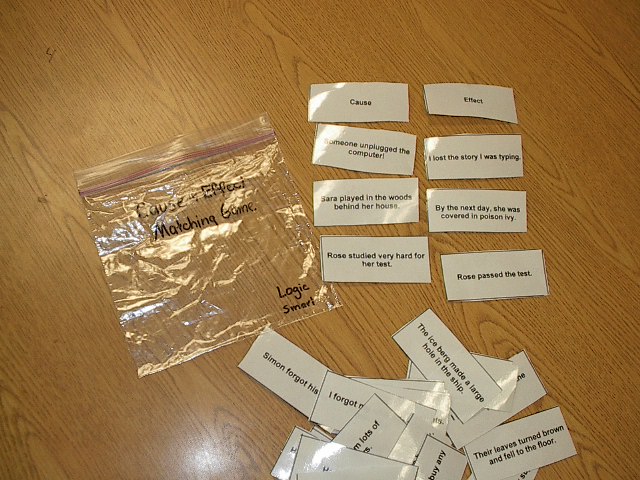
When teaching cause and effect, I downloaded some flashcards from the FlashcardExchange.com. (This used to be a free service; there is now a $20 one-time fee for unlimited lifetime printing access. While I couldn’t find this exact set to link to here, these are also good and these are great for older kids.) One half of the class got cause cards; the other half got effect cards. They had 3 minutes to find the person on the other side of the room that completed their cause/effect statement logically. Statements were then read to the class and evaluated for accuracy. Afterward, the cards were placed in a center for students to either match up or play the game Memory with (in which all cards are turned face down and players have to try to flip over matching pairs).
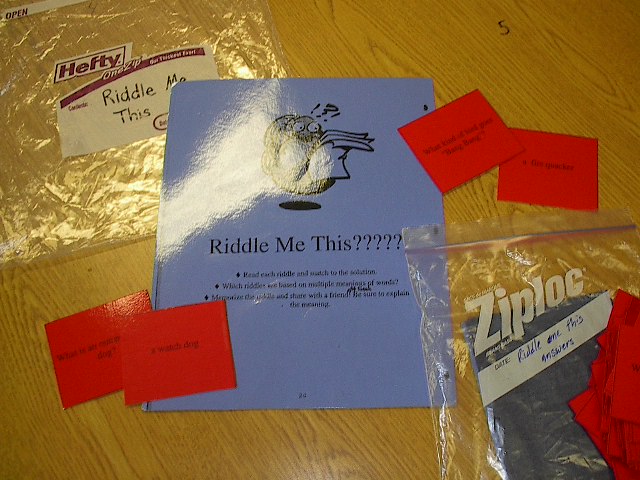
This class game was played the same way the Cause and Effect game (above) was played. The only difference is that this game involves puns and multiple meaning words. In the center, students must match the riddles to the answers and write in their journals what the multiple meaning word is. For example, “Why is it hard to catch a refrigerator?” goes with “Because it’s always running!”. Students must identify the word “running” as the multiple meaning word and write that the word can mean jogging or like a machine with a motor going. I do not have the riddles in a downloadable form, unfortunately, but you can use pretty much any kids’ joke books to find lots of riddles and puns on your own. You could also print, enlarge, and cut apart the puns listed here or on another website (search for ‘short puns for kids’).
Make and share center materials with other teachers!
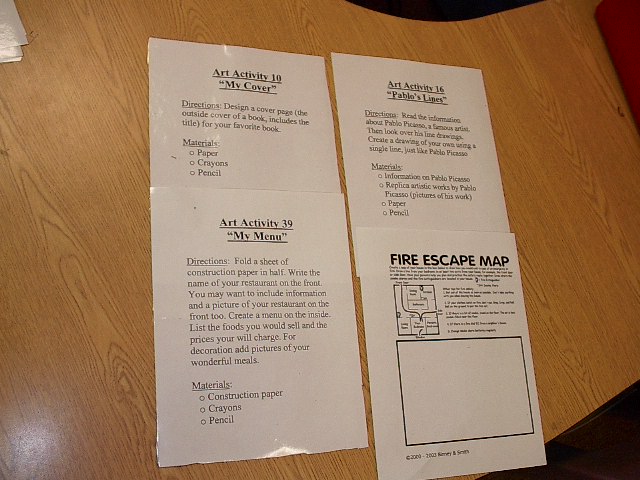
These art center activities were taken from ideas my co-worker found online several years ago (unfortunately, I don’t have the website). She adapted them for our grade level, typed up simple directions, photocopied, and laminated. Kids always cut out laminating materials for us. We found that making grade-level sets of things we use in the classroom, from worksheets to centers, really helps the whole team. If we each implemented one new idea like this once a month and share it, we got four new activities, centers, and/or lesson materials monthly. If you’re going through all the trouble to make something for your own classroom, it’s really not that much more work to make a few more sets for every teacher in your grade level.
If this isn’t feasible in your teaching situation, see if another teacher will rotate materials with you: you can use certain centers that belong to her for a month while she uses yours, then switch back. Just making this suggestion is enough to get many teachers excited about collaborating, and hopefully you’ll at least get some insight into how other teachers run their center time. Many of the best ideas and resources I have came from my co-workers.

Angela Watson
Founder and Writer
Sign up to get new Truth for Teachers articles in your inbox
OR

Join our
community
of educators
If you are a teacher who is interested in contributing to the Truth for Teachers website, please click here for more information.















